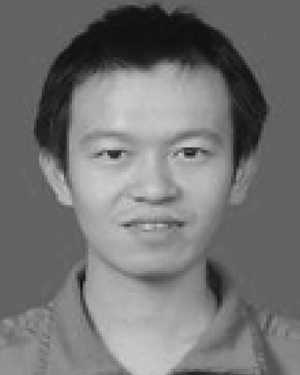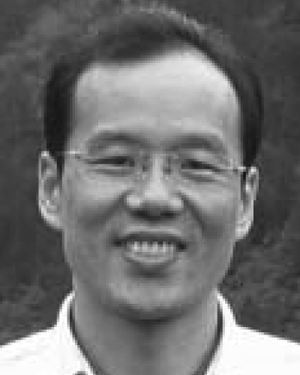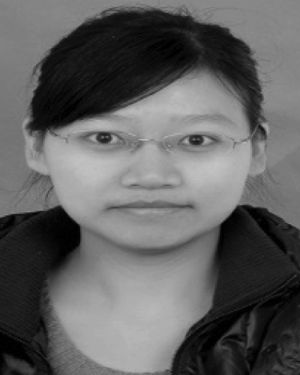Abstract:
The spatial resolution is still a problem in passive microwave remote sensing, especially in low frequency. In recent years, the satellite formation flying has been propo...Show MoreMetadata
Abstract:
The spatial resolution is still a problem in passive microwave remote sensing, especially in low frequency. In recent years, the satellite formation flying has been proposed. Based on this technique, a large array is able to be synthesized in orbit to achieve higher spatial resolution. However, it is a big challenge for the control system to constrain all the satellites in a coplane in orbit. The 3-D array configuration is a good choice for a synthesized array based on satellite formation flying. In this paper, the complete formulation of visibility functions, including system imperfections, in a 3-D aperture synthesis radiometer (3-D ASR) is derived. The array factor of a 3-D ASR is defined. The reconstructed modified brightness temperature (BT) is a 3-D linear convolution of the modified BT and the array factor. Based on this relationship, the reconstruction method for a practical 3-D ASR is studied. The numerical results demonstrate that the reconstruction method is correct and stable. Finally, a discussion is given to analyze several existing methods that were proposed to reconstruct BT image for 3-D arrays in radio astronomy and earth observation. Compared with these existing methods, our imaging method is more suitable for earth observation based on the technique of satellites formation flying in low earth orbit. In addition, according to the derivations, some mature techniques that were developed for 2-D ASRs may be applied to 3-D ASRs.
Published in: IEEE Transactions on Geoscience and Remote Sensing ( Volume: 57, Issue: 4, April 2019)
Funding Agency:

Collaborative Innovation Center of Industrial Bigdata, Hubei University of Technology, Wuhan, China
Li Feng received the B.S. and M.S. degrees in electrical engineering from Huazhong Normal University, Wuhan, China, in 2005 and 2008, respectively, and the Ph.D. degree in electrical engineering from the Huazhong University of Science and Technology, Wuhan, in 2014.
Since 2014, he has been with the Hubei University of Technology, Wuhan. His research interests include image reconstruction, microwave radiometer calibration, ...Show More
Li Feng received the B.S. and M.S. degrees in electrical engineering from Huazhong Normal University, Wuhan, China, in 2005 and 2008, respectively, and the Ph.D. degree in electrical engineering from the Huazhong University of Science and Technology, Wuhan, in 2014.
Since 2014, he has been with the Hubei University of Technology, Wuhan. His research interests include image reconstruction, microwave radiometer calibration, ...View more

Department of Electronics and Information Engineering, Huazhong University of Science and Technology, Wuhan, China
Qingxia Li (M’08) received the B.S., M.S., and Ph.D. degrees in electrical engineering from the Huazhong University of Science and Technology, Wuhan, China, in 1987, 1990, and 1999, respectively.
He is currently a Professor with the Department of Electronics and Information Engineering, Science and Technology on Multi-Spectral Information Processing Laboratory, Huazhong University of Science and Technology, Wuhan. His rese...Show More
Qingxia Li (M’08) received the B.S., M.S., and Ph.D. degrees in electrical engineering from the Huazhong University of Science and Technology, Wuhan, China, in 1987, 1990, and 1999, respectively.
He is currently a Professor with the Department of Electronics and Information Engineering, Science and Technology on Multi-Spectral Information Processing Laboratory, Huazhong University of Science and Technology, Wuhan. His rese...View more

Department of Electronics and Information Engineering, Huazhong University of Science and Technology, Wuhan, China
Yufang Li received the B.S. and M.S. degrees in electrical engineering from Huazhong Normal University, Wuhan, China, in 2010 and 2013, respectively, and the Ph.D. degree in electrical engineering from the Huazhong University of Science and Technology, Wuhan, in 2017.
Since 2018, she has been with the Huazhong University of Science and Technology. Her research interests include microwave remote sensing and array signal pro...Show More
Yufang Li received the B.S. and M.S. degrees in electrical engineering from Huazhong Normal University, Wuhan, China, in 2010 and 2013, respectively, and the Ph.D. degree in electrical engineering from the Huazhong University of Science and Technology, Wuhan, in 2017.
Since 2018, she has been with the Huazhong University of Science and Technology. Her research interests include microwave remote sensing and array signal pro...View more

Collaborative Innovation Center of Industrial Bigdata, Hubei University of Technology, Wuhan, China
Li Feng received the B.S. and M.S. degrees in electrical engineering from Huazhong Normal University, Wuhan, China, in 2005 and 2008, respectively, and the Ph.D. degree in electrical engineering from the Huazhong University of Science and Technology, Wuhan, in 2014.
Since 2014, he has been with the Hubei University of Technology, Wuhan. His research interests include image reconstruction, microwave radiometer calibration, and array signal processing.
Li Feng received the B.S. and M.S. degrees in electrical engineering from Huazhong Normal University, Wuhan, China, in 2005 and 2008, respectively, and the Ph.D. degree in electrical engineering from the Huazhong University of Science and Technology, Wuhan, in 2014.
Since 2014, he has been with the Hubei University of Technology, Wuhan. His research interests include image reconstruction, microwave radiometer calibration, and array signal processing.View more

Department of Electronics and Information Engineering, Huazhong University of Science and Technology, Wuhan, China
Qingxia Li (M’08) received the B.S., M.S., and Ph.D. degrees in electrical engineering from the Huazhong University of Science and Technology, Wuhan, China, in 1987, 1990, and 1999, respectively.
He is currently a Professor with the Department of Electronics and Information Engineering, Science and Technology on Multi-Spectral Information Processing Laboratory, Huazhong University of Science and Technology, Wuhan. His research interests include microwave remote sensing and deep space exploration, electromagnetic theory and application, antenna array, and signal processing.
Qingxia Li (M’08) received the B.S., M.S., and Ph.D. degrees in electrical engineering from the Huazhong University of Science and Technology, Wuhan, China, in 1987, 1990, and 1999, respectively.
He is currently a Professor with the Department of Electronics and Information Engineering, Science and Technology on Multi-Spectral Information Processing Laboratory, Huazhong University of Science and Technology, Wuhan. His research interests include microwave remote sensing and deep space exploration, electromagnetic theory and application, antenna array, and signal processing.View more

Department of Electronics and Information Engineering, Huazhong University of Science and Technology, Wuhan, China
Yufang Li received the B.S. and M.S. degrees in electrical engineering from Huazhong Normal University, Wuhan, China, in 2010 and 2013, respectively, and the Ph.D. degree in electrical engineering from the Huazhong University of Science and Technology, Wuhan, in 2017.
Since 2018, she has been with the Huazhong University of Science and Technology. Her research interests include microwave remote sensing and array signal processing.
Yufang Li received the B.S. and M.S. degrees in electrical engineering from Huazhong Normal University, Wuhan, China, in 2010 and 2013, respectively, and the Ph.D. degree in electrical engineering from the Huazhong University of Science and Technology, Wuhan, in 2017.
Since 2018, she has been with the Huazhong University of Science and Technology. Her research interests include microwave remote sensing and array signal processing.View more


